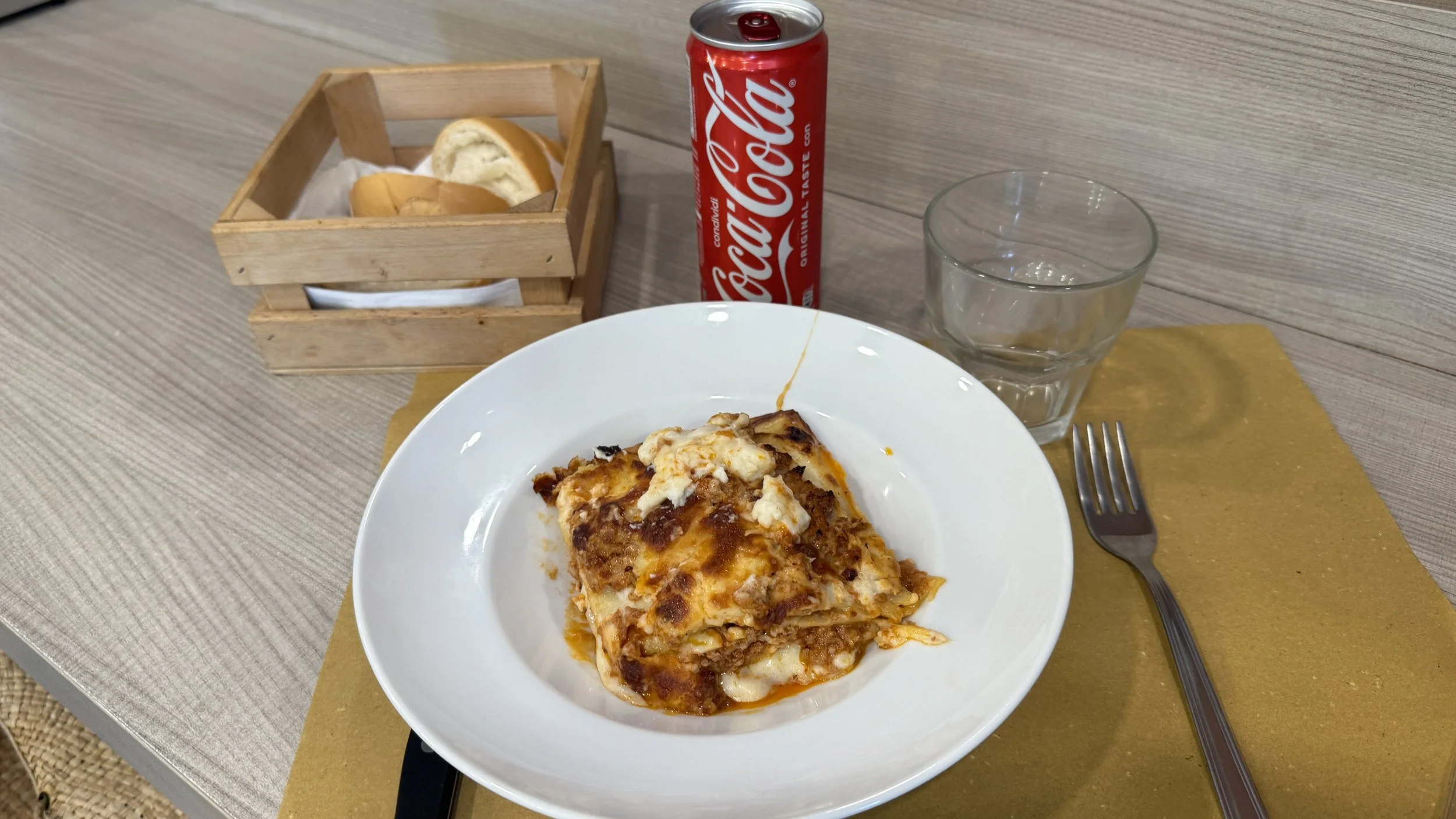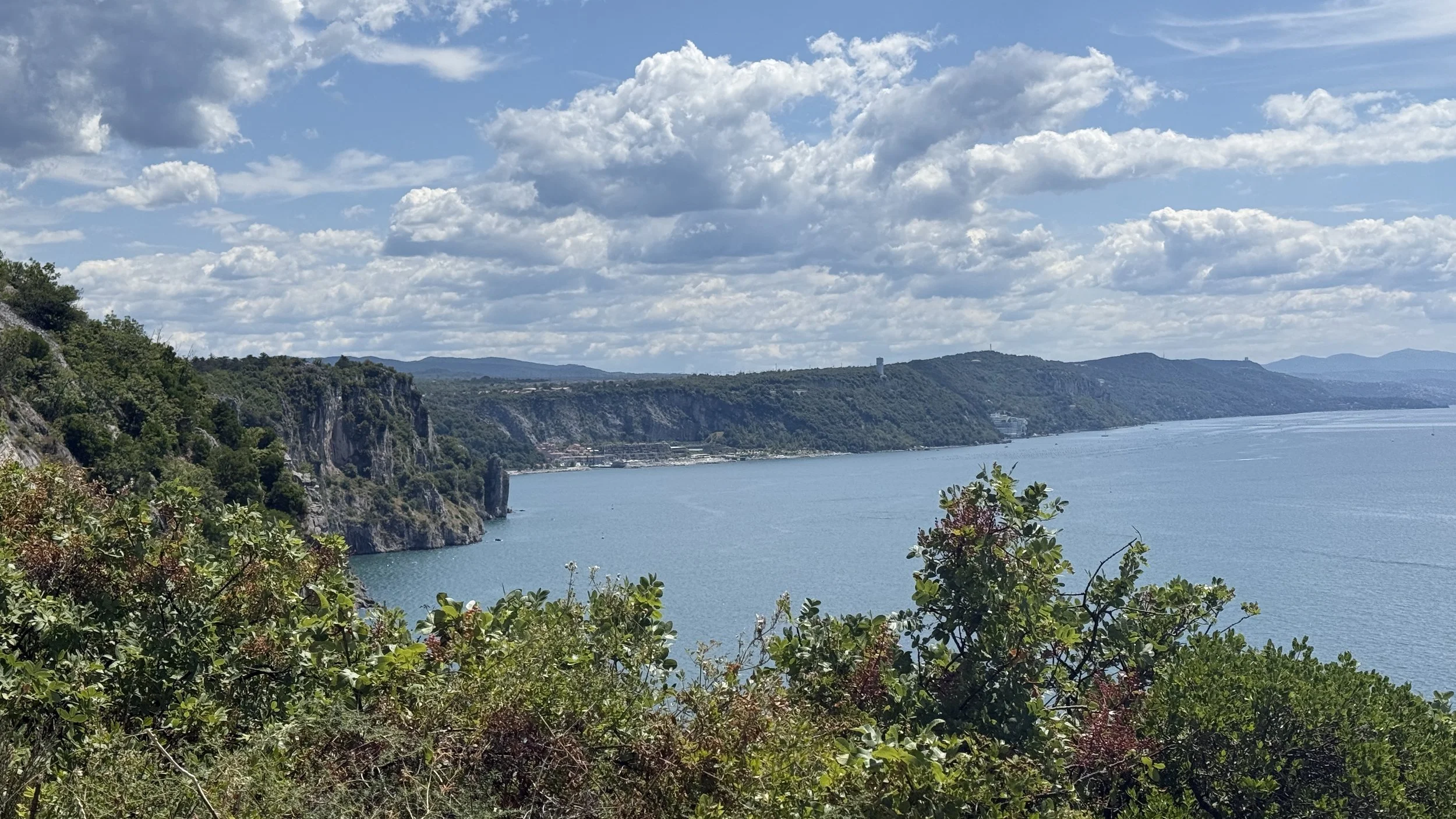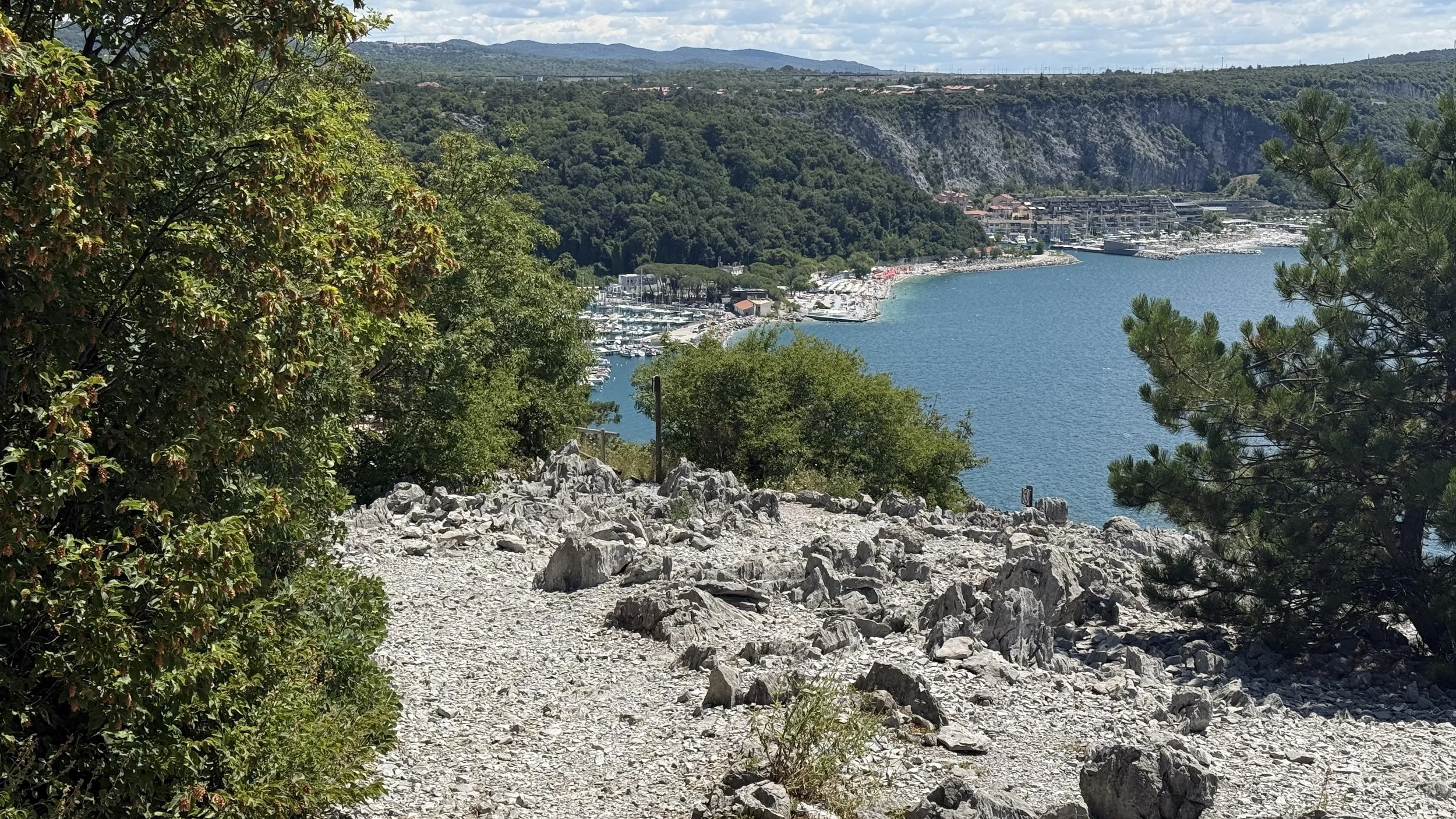Day 61 - July 10th: Old roads. New Records.
Grado to Trieste: 31.8 miles / 1,680 total
Christina, Jax, and I enjoyed what felt like a rare day off after a short 33k that included a sightseeing tour of Aquileia. Christina wandered toward the beaches and learned that you can’t actually access the water without going through a private beach club. After a few restful hours, we were treated to one of the best meals of the trip at a local trattoria that opened at 6 PM—early by Italian standards but perfect for us. I had beef carpaccio with arugula, a tuna steak, pasta, a tomato and onion salad, and a pastry. I definitely went to bed with a full tank.
Before lights out, we checked in on the progress of Bob Becker and other friends out on their own endurance journey, the Badwater 135. Come morning, we learned Bob not only finished under the 48-hour cutoff—he did it in 45 hours, setting a new record. At 80 years old. Incredible. Huge congrats to Bob, Lisa, Marshall, Heather, Will—and also to Odara, Luke, and Tatiana, the first Ukrainian woman to finish the race. I met them all at the Brazil 135 earlier this year. I remember taking a wrong turn and Luke yelling at me to turn around. I remember finding Tatiana collapsed at mile 65 outside Borda da Mata. Amy and I helped her with her crew, and she pulled it together and finished. Amy, Alan and Caique like them so much we invited them to join us in our post BR135 celebration in Campos do Jordão with Maureen and Dean who crewed and hod a blast. These races throw strangers together under pressure, and the stories that come out are always real, never predictable.
Our hotel didn’t serve breakfast until 8 AM, but they packed a snack bag so I could get out by 6:30. I stepped into a crisp 55° morning, sun rising over the Slovene and Croatian mountains to the east, and the wide beach of Grado in front. Heading east out of town, I stayed away from the tourist areas and found the public beaches that Christina hadn’t seen. The Adriatic was shallow and calm with no waves—just long, soft sand.
About 2 km down the beach I picked up a well-paved bike and pedestrian trail that paralleled SS19. It was ideal. Quiet. Scenic. Locals were out walking, cycling, stretching into their day. I hoped the trail would last to Monfalcone—22 km away—because I knew SS19 wouldn’t be kind. Unfortunately, it only lasted 11 km. The rest was on a shoulderless road. I was relieved I hadn’t brought Jax as I desperately wanted.
I reached Monfalcone at 10:30 and ducked into a café for water and calories. A few kilometers later I found a place serving hot food and wolfed down lasagna Bolognese. The name Monfalcone means “Falcon Hill.” In ancient times, it was a Roman settlement, but its more recent history stands out—especially in World War I. This area was a key battleground during the Isonzo campaign. The shipyards here are still active today, and the city played a vital industrial role during both world wars.
Full and fueled, I exited town hoping for a trail but was crushed to find myself back on SS14, the same punishing highway from a few days ago. I put my head down and ran.
Five kilometers later, salvation: a right-hand turn onto trail. At the same time, Christina called—she and Jax were driving to Trieste and saw me on Find My iPhone. Just as I emerged onto a small road to cross to the next trail segment, she appeared. Five minutes later, the Jax handoff was complete and he was raring to go.
We were now officially on the Via della Costa, which starts in Muggia and runs along the northern Adriatic coast. It connects to the Via Francigena and stretches west across Italy to France. While we haven’t hit Muggia yet, we’re close. The trail climbed into a hillside village with a tidy main street before shooting us straight up to the cliffs overlooking the entire Gulf of Trieste.
From the top, I could see Trieste stretched across the bay. Behind me, the long curve of the coast from Grado. The trail was stunning—a rocky path riding the edge of the cliff, with a split-rail fence on the sea side and thick, shaded forest on the other. I slowed down and stopped at every viewpoint. One of the best sections on this entire trip.
The trail ended in Sistiana, a pretty village with ancient roots. This area once held Roman villas and was later a lookout post for Austro-Hungarian defenses. We rejoined SS14, but for once, it had proper pedestrian and bike lanes. The road hugged the cliffs like California’s PCH through Big Sur, and I didn’t even notice how much we’d climbed until we started descending—8 km straight down on a gentle grade.
Before reaching sea level, we passed Castello di Miramare, perched dramatically above the water. Built in the 1850s for Archduke Ferdinand Maximilian of Austria, the castle blends medieval aesthetics with romanticism. It was later occupied by German forces during WWII and then used by the U.S. Army. Today it’s open to the public, and its position on the water is jaw-dropping.
The road gave way to a boardwalk. We hit beach traffic—locals sunning themselves on towels laid right across the pavement. Big rocks formed jetties, and a staircase dropped into the sea. No sand, just ingenuity. Cafés dotted the promenade every few hundred meters and the crowds swelled as we got closer to the city.
By the time we entered Trieste, the sky had darkened with storm clouds. We finished at the B&B Hotel where Christina was waiting.
It felt like a big day—beach, road, trail, cliff, mountain, harbor. Jax and I were done. Happy to be home. Ready to regroup.
Trieste itself deserves a pause. This city has been a crossroads of cultures, languages, and empires for over two millennia. Once a Roman port known as Tergeste, it rose to prominence under the Habsburgs, becoming the Austro-Hungarian Empire’s key seaport. The city thrived on coffee, shipping, and literature—it was home to James Joyce, who wrote much of Ulysses here, and Italo Svevo, one of Italy’s great modernist writers. After World War I, Trieste was annexed by Italy, but its complex identity remained. During WWII it was occupied by Nazi Germany, then briefly became the Free Territory of Trieste under Allied administration before officially returning to Italy in 1954. Even now, Trieste feels like a cultural blend—Italian, Slavic, Germanic—shaped by its position at the edge of so many shifting borders.
Just a few kilometers north of where we ran today lies Slovenia, another layer in this borderland’s deep story. This region was once part of the Roman province of Pannonia, then ruled by the Habsburgs for centuries before becoming part of Yugoslavia in the 20th century. After Slovenia’s peaceful break from Yugoslavia in 1991, this area became one of the newest—and most peaceful—borders in Europe.
Thanks for following along and supporting us.
Cheers,
David.













